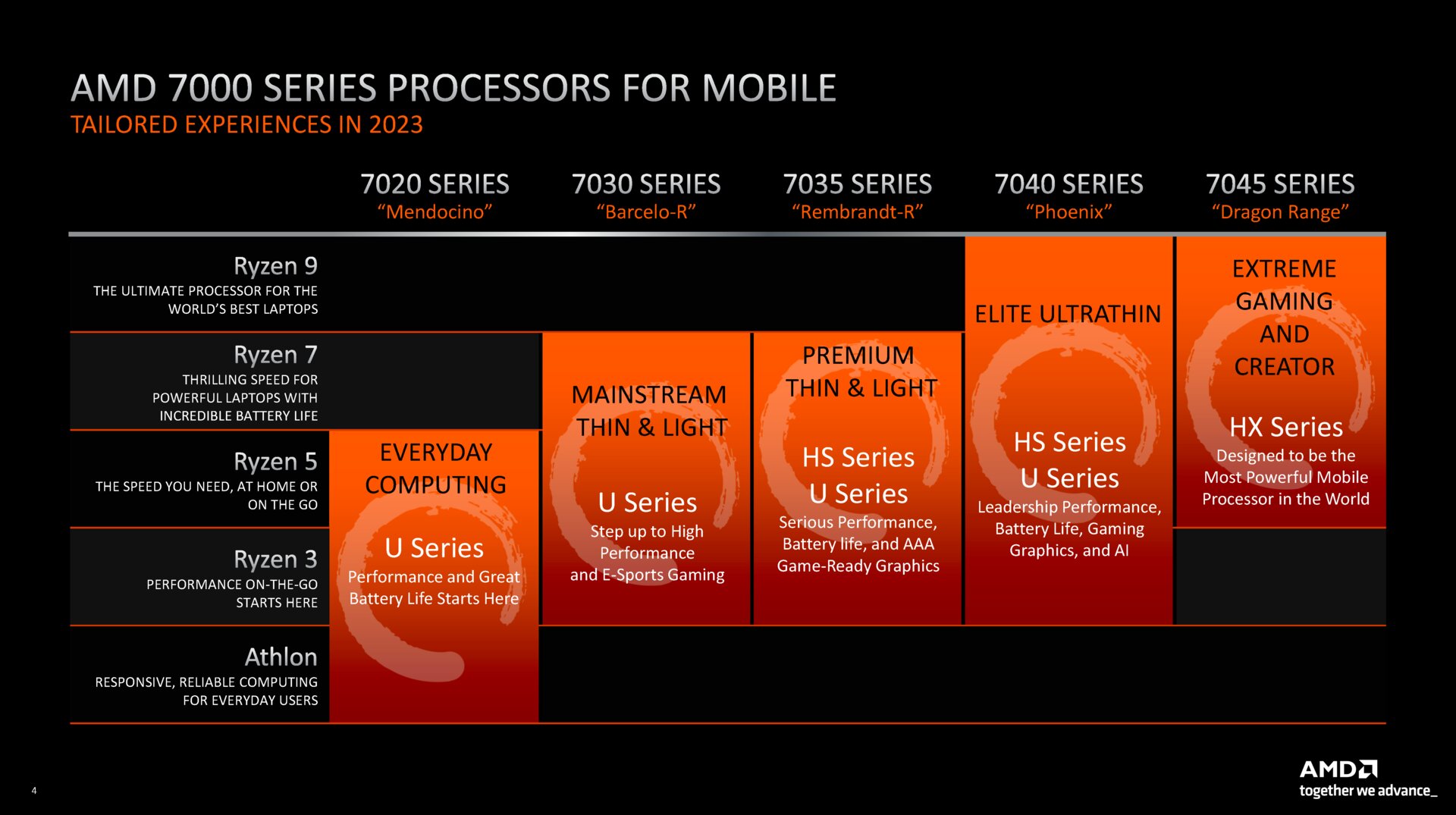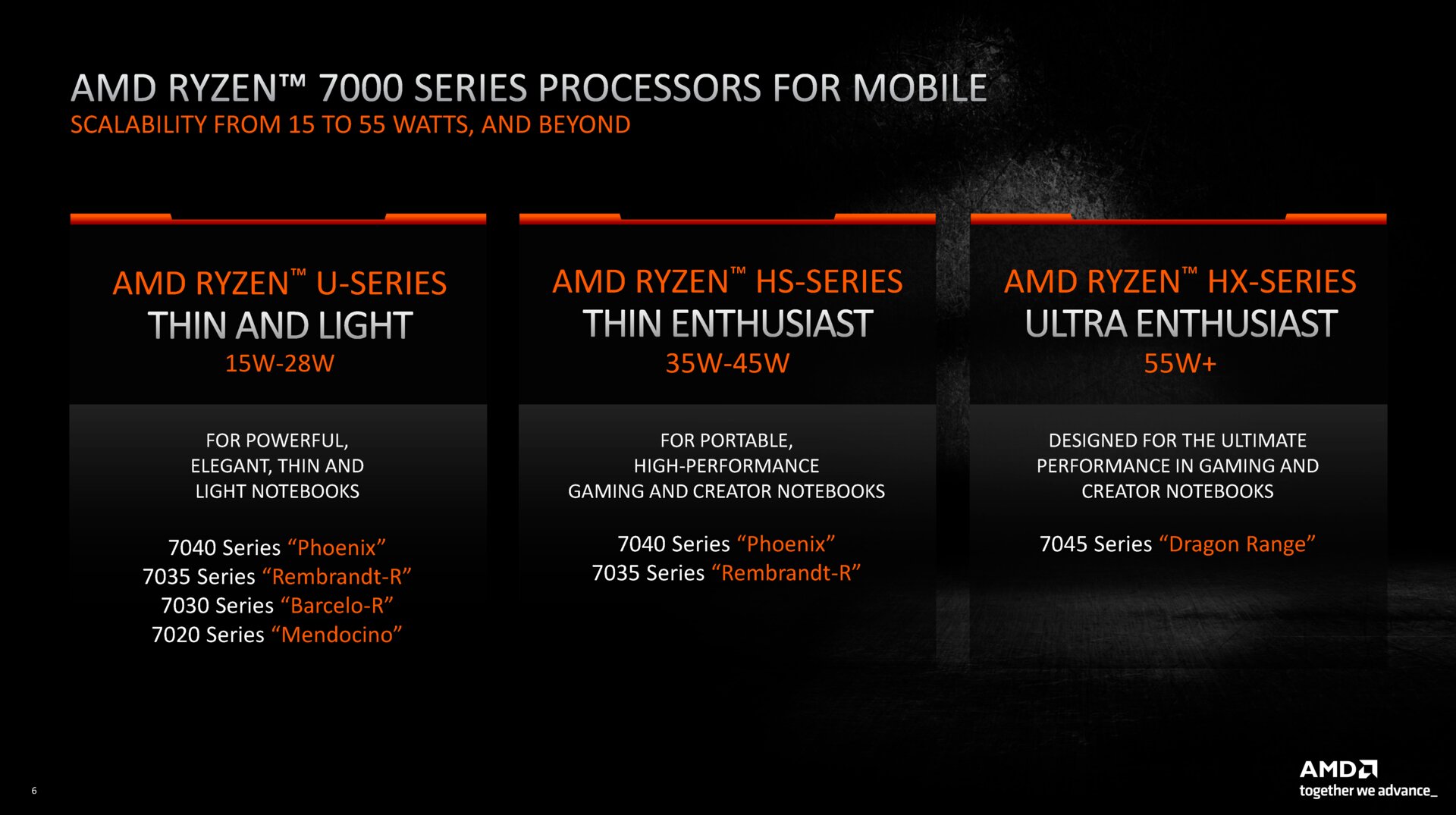Although announced last year, the new AMD APUs from the Phoenix series do not support PCIe 5.0. This means that the notebook processors of the Ryzen 7×40 family still have to make do with PCIe 4.0. PCIe 5.0 is only available with the Ryzen 7×45 aka Dragon Range.
According to AMD, Phoenix only has PCIe 4.0
The AMD product pages that have now been activated are clear on this point: For all models with the code name Phoenix, specifically the Ryzen 9 7940HS, the Ryzen 7 7840HS and the Ryzen 5 7640HS, it is now called PCI Express version PCIe 4.0 specified.
Last year it was still PCIe 5.0
That's surprising, because last year AMD not only supported PCIe for the top models of the Dragon Range family, but also for Phoenix 5.0 promised. This is proven by a graphic published by AMD.
While Dragon Range follows the chiplet approach of the desktop models and has a separate I/O die, Phoenix is a monolithic chip that packs Zen 4 cores, RDNA3 GPU and interfaces in unites. In this APU design, PCIe 5.0 is apparently not intended or is simply not used. Instead, up to 20 PCIe 4.0 lanes are offered.
The Ryzen 7×35 aka Rembrandt-R still offer 16 usable PCIe 4.0 lines. The Ryzen 7×30 (Barcelo-R) only has 16 PCIe 3.0s, and the entry-level Ryzen 7×20 models with Mendocino APU go down to four PCIe 3.0s. The table below provides an overview.



Overview: The Ryzen 7000 Mobile portfolio in five series (Image: AMD)
As diverse as AMD's range of notebook processors has become, the distinction between CPU and GPU architecture and interfaces has become just as complicated. With a Ryzen 7xxx for notebooks, you have to take a close look at what is on offer.
PCIe 5.0 not yet relevant in the notebook
But PCIe 5.0 is not yet available anyway Must. While the first PCIe 5.0 SSDs give the new interface a right to exist in desktop PCs, this is even less true in notebooks. Because of the high power consumption and the associated waste heat of these SSDs, they are hardly suitable for notebooks anyway.
And PCIe 4.0 is still sufficient for dedicated GPUs in notebooks as well as desktop graphics cards completely off.
The following report from CES 2023 reveals what else the new generation of notebook processors from AMD has to offer:
- AMD Ryzen 7000 Mobile: RDNA 3 in the Zen 4 APU and 16 cores via chiplet approach
The first notebooks with a Phoenix APU are expected in March, the HX models (Dragon Range) should be available earlier.

